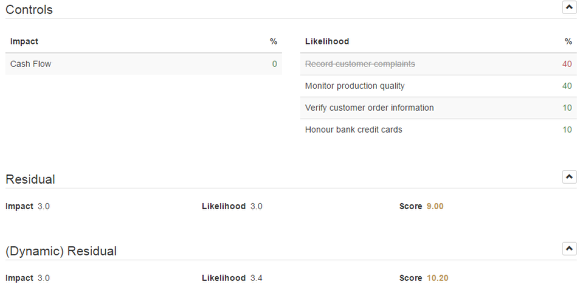Dynamic Residual Scoring (D.R)
D.R. stands for Dynamic Residual. The residual score is based on which controls are working and active. The Dynamic Residual shows the score based on which controls are active and working.
Inherent
The inherent score is the impact and likelihood of a risk breach without any controls in place.
Residual
The Residual is what it is with controls in place to reduce the risk. This is the maximum reduction with the controls in place.
Dynamic Residual - Based on Control Effectiveness
The residual score is based on the Controls you have added to reduce the impact and likelihood. You can weight each control to indicate how much of the reduction that controls accounts for. If you leave them at 0 the weight will be even, number of controls divided by 100.
In the above example Cash Flow accounts for 100% of the 2 point impact reduction. Whilst there are 4 controls that account for the 1 point drop in likelihood. Record customer complaints it responsible for 40% of that drop (.40)
If all the controls are active and working the Dynamic Residual (D.R) will be the same as the Residual.
If one of the controls fails then the Dynamic Residual score will change automatically to reflect that change.




